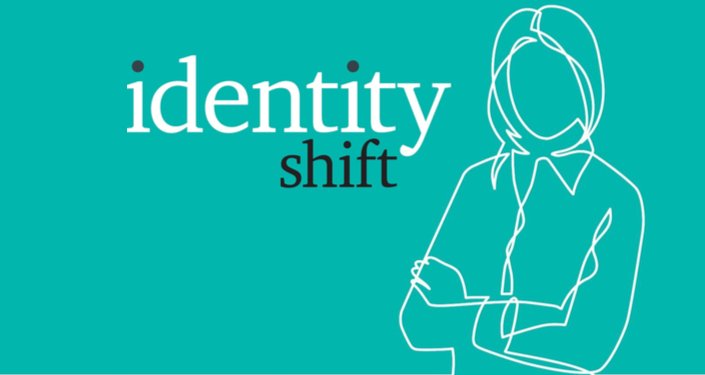As a marketing leader your annual plan has just been turned upside down by a crisis. What can you do to steady the ship and get your teams focused on the future?
Continue readingBooks on leading in the AI age
Booktopia’s Tracey Mills handpicks six books to help lead people through technology disruption.
Continue readingIdentity shift: secrets to successful career transitions
Switching careers is perfectly possible with the right plan in place.
Continue readingTwo ethical virtues in times of crisis
By Dr Simon Burgess
As a leader, what are the most essential qualities to possess in times of crisis? Credibility, determination, a reassuring presence, and adaptability all come to mind. After all, your team members want you to be straight with them. They want to retain a sense of purpose, and they want to be able to have confidence in you. If they don’t get clear and credible information from you, they’ll be sure to disengage and get what they want elsewhere.
Now the truth is that all of that applies at any time. Like many fundamental insights about leadership, it can be worth bearing in mind regardless of whether things are chaotic or calm. But in any case, let’s consider a couple of ethical virtues that are perhaps especially relevant in times of crisis. One of these is empathy. The other is principled integrity. Both are vital in maintaining trust during trying times.
Lead with empathy
In some ways, leading through the current coronavirus pandemic is akin to the situation faced by business and civic leaders in New York following the terrorist attacks on September 11, 2001. While the carnage was both horrifying and bewildering, clearly those leaders weren’t responsible for any of it. Their responsibilities were entirely concerned with how best to respond. And virtually without exception, the people they led were immediately ready and willing to accept all the guidance that their leaders were able to provide. Rudy Guiliani, in particular, the mayor of New York at the time, is rightly admired for the empathic role that he performed.
Admittedly, Guiliani has never been universally admired. Moreover, his reputation has taken several serious turns for the worse since he joined the Trump administration. But without pretending that Guiliani has ever been perfect (and no leader is), let’s try to remember the kind of empathic leadership style that he showed back in 2001.
Importantly, his empathy wasn’t mere sentimentality. He didn’t cry in public or put his emotions on display. In fact, in his book Leadership, he explains that “there was no time to spend actually experiencing an emotion. There were moments of anger, fear, and sorrow, but with so much to do it was impossible to dwell on those feelings.”
But Guiliani clearly was emotionally ‘tuned in’ with those around him. He listened to the experts, and his emotional intelligence was central to the open, adaptable, and sure-footed leadership that he provided. His empathy also went hand-in-hand with his confidence that all kinds of people would rise to the occasion, and when we recognise a leader’s empathy in that form, it naturally brings out the best in us. Notwithstanding the shock and grief that were so widely shared, that empathic style actually raises morale and generates a sense of resilience, fortitude, and purpose.
Make decisions based on principled integrity
Without a doubt, something that many organisational leaders will have been quietly contemplating in recent months is the idea that one ‘should never let a good crisis go to waste.’ It’s an idea that has been most avidly promoted in recent years by Rahm Emanuel, former Chicago mayor and President Obama’s first chief of staff. And admittedly, it’s an idea that can be very tempting. When a crisis that isn’t of your own making comes along, it is often possible to exploit it. Put simply, you can use it as a pretext for something that you’ve long wanted to do (whether it be related to structure, strategy, policy or personnel) but for which you have never been able to gain support.
Crises need to be addressed squarely, decisively, and sometimes with radical action. But even in a state of crisis, our actions should be principled. They should always be based on a genuine rationale; one that can be defended with honesty and candour. If your organisation needs a restructure, argue for a restructure. If you want to reassign certain personnel, give honest reasons for your view. But if your supposed need for such changes isn’t genuinely due to the current crisis, don’t pretend that it is. Understanding the context is one thing. Exploiting it as a pretext is quite another.
Simon Burgess is a lecturer in Ethical Leadership at the University of New England Armidale.
Why soft skills are today’s most valuable leadership asset
By Greg Smith
Soft skills have long been a desired leadership capability. However, in an age where rapid advances in technology are redefining how humans add value in the workplace, soft skills will increasingly become the most sought after employee capability possibly eclipsing everything else. Our current situation with the COVID-19 pandemic has thrust us into the new reality right now. And that’s just the beginning. Deloitte’s 2019 study, The path to prosperity. Why the future of work is human, predicts that by 2030 around two-thirds of jobs will be ‘soft-skill intensive’.
Sometimes when change is so rapid, it can feel like a high-speed train bearing down, and the immediate inclination is to jump out of the way. However, the best response is to understand, embrace and run with it!
Let’s see what that practically means when it comes to soft skills and the workplace.
“My boss has terrible interpersonal skills.”
How many times have you overheard one person saying this to another: “My
boss is really great technically but has terrible interpersonal skills.”? This is still a major deficit for some
leaders and continues to frustrate the growth and progress of individuals,
teams and entire organisations.
Leadership development programs, for some time now, have sought to improve
leaders’ ability to better connect with others. However, this remains an
elusive skill for many. Dial up the need for this capability many times over,
and it doesn’t require much of a stretch of the imagination to see why this
will become an absolute requisite and priority for effective leadership.
The notion of soft skills also implies the existence of hard skills. So what are soft skills, and how are they different from hard skills? Let’s first take a look at the sources of soft skills. These are found in personality traits, personal attributes and specific behavioural competencies. Hard skills, on the other hand, are developed through training and learning. It’s easy to see from this comparison why the nature of soft skills makes them much more difficult to impart to others than hard skills! The exciting aspect of soft skills is that they are highly transferable, which in a fast-changing employment landscape driven by technological change, makes them an extremely valuable asset and powerful differentiator when competing for jobs.
Why EQ matters
Fortunately, the concept of Emotional Intelligence (EQ) harnesses the key suite of soft skill capabilities required by leaders and their followers alike. Simply put, EQ may be thought of as not letting your emotions stop you achieving your goals. Although this descriptor neatly packages up EQ into a simple and easy to grasp idea; it doesn’t help with understanding how to develop and enhance your EQ capability.
Daniel Goleman described EQ competencies as “how leaders handle themselves and their relationships” in his book, The New Leaders. He explains EQ competencies in two domains:
- Personal competence: Self-Awareness and Self-Management
- Social competence: Social Awareness and Relationship Management
It’s immediately apparent that EQ competencies cannot be ‘codified’ or automated and therefore replicated by AI or machines, making them solely the domain of human beings. However, if AI and machines take over routine tasks (e.g. technical support, bricklayers or administration) then non-routine roles (e.g. social workers, emergency workers, teachers or chief executives) become a natural place for humans to gravitate towards, an essential transition for secure employment in the longer term.
Three navigation steps for the workplace
There are three key steps to navigate and take advantage of the wide array of exciting roles that will open up as a result of technological change. These are:
Step 1: understand and internalise the new reality of the transition that’s afoot showing where human beings will add value in the workplace of the future. It’s just around the corner, so it’s worthwhile considering how this may impact your career in terms of risks but more importantly opportunities.
Step 2: reflect on where and how you add value now in your current work role.
Step 3: identify your transferrable skills and consider how you might align these to the jobs of the future. This includes exploring what further training and development you may need to optimise these skills fully.
Start preparing now!
It’s highly likely that you could be drawing on soft skills to drive your future career even if you don’t use or need these skills in your job right now. My advice is to start preparing now for the future that lies ahead. The future is sure to be full of boundless possibilities as new jobs unfold that have not yet been invented or even conceived!
Greg Smith is an expert in career development, talent management and organisational leadership. He is the author of Career Conversations: How to get the best from your talent pool (Wiley).
Personal, organisational and national resilience: lessons from three African nations
By Sam Durland FIML
A few years ago, I had a brief encounter with Julia Gillard, during which I asked her how she had managed to cope with the rough and tumble of politics during a particularly tumultuous time in Australia’s recent history. She answered with one word: resilience. Indeed, in her autobiography, Gillard devotes an entire chapter to resilience, which she ascribes to a sense of purpose.
For me, resilience means the ability to overcome major challenges or setbacks. Over the past 20 years, working as an international development consultant and adviser in several African countries, I have encountered numerous examples of resilience at an individual, organisational and national level.
Personal resilience: a lesson from Uganda
In Uganda, I worked with a local entrepreneur who was developing several enterprises based on primary production. The aim is to enable his poor district in the west of the country to become self-sufficient instead of importing foods and raw materials from elsewhere. He was not driven by a need to generate wealth for himself; instead, a burning desire to provide employment and a secure future for his people. He faced many obstacles, from government officials trying to exact bribes for the services they were charged with providing, to a system of land ownership that made it difficult to obtain secure title to agricultural land.
My client was dogged in his resistance to illegal payments and unrelenting in his efforts to register his land title. I especially marvelled at how he dealt with public servants, who put my client at risk of not receiving the requested service, or more alarming, put his safety in danger. In the end, sheer persistence won the day, and the service was rendered without the payment of a bribe.
The lesson: In reflecting on my client’s character, which I believe formed the foundation of his success, I would describe him as exhibiting resilience based on a strong sense of purpose and an overwhelming desire to be of service to his people.
Organisational resilience: a lesson from Lesotho
In the small African country of Lesotho, I worked with a dedicated group of local and international consultants and advisers on a United States-funded project to develop a new government agency that would provide secure land ownership for the country’s citizens. This agency was intended to replace a government department that was widely thought to be both corrupt and inefficient in its dealings with the general public. Members of the project staff faced a major obstacle in the form of pushback from political interests who appeared reluctant towards change.
Project staff found that they were prevented from meeting with key public servants, they had their furniture removed from their offices, and there was even an attempt to confiscate their computer equipment.
The lesson: Despite these and other setbacks, they were resolute in their determination that the project should succeed (and it did), knowing that there was widespread community support for the initiative, as well as obvious benefits for the country’s economy. In the face of strong opposition, this group displayed resilience based on a sense of integrity and a commitment to do what is right.
National resilience: A lesson from Liberia
Finally, I turn to the West African country of Liberia, recently wracked by an Ebola-virus epidemic and still recovering from a 14-year-long civil war. As a consequence of the war, much of the country’s infrastructure had been decimated and government departments’ records destroyed or rendered incomplete. Here, my role was to work with a team of international and local consultants and advisers, and their counterparts in the public service, to develop a new authority designed to oversee land administration and land management in the country and overcome a fragmented and dysfunctional bureaucracy.
Both the war and the epidemic had significantly touched virtually every Liberian whom I came into contact with that time. Yet, despite the distinct challenges, they exhibited both an enthusiasm for our project and a positive outlook on the country’s future.
The lesson: I ascribe their resilience to a sense of positive leadership at the national level (their President, Ellen Johnson Sirleaf, had won the Nobel Peace Prize), a strong sense of national purpose, and a national character grounded in hope.
For me, an underpinning sense of hope is present in all of these examples of resilience. Hope’s power is epitomised by Desmond Tutu when he said, “Hope is being able to see that there is light despite all of the darkness”.
Sam Durland is a Fellow of IML ANZ. Sam’s consulting work has taken him to more than 20 countries in Asia, the Pacific, Africa and South America. He previously held senior executive positions with private enterprise, statutory authorities and government departments in Australia and overseas.
Strengthen your resilience
Leaders need resilience to cope with the daily stresses of work and life. But when the work environment has changed and you face new challenges, what can help you perform at your best?
Paralympian and corporate high-performance coach, Katrina Webb OAM MIML will help take you through a three-phase process to manage your priorities, energy and your mind in our upcoming Virtual Event, ‘The Road to Resilience’.
Mentoring: Support and advice during these tough times
When we are all surrounded by so much uncertainty, it helps to find someone we can trust.
From a professional perspective, a mentor can be just that – someone who has our best interest at heart. Although a manager might seem the best placed to provide work-related advice, sometimes it helps to get a different view of things.
Mentoring provides a safe sounding board
As the University of Melbourne’s Mobile Learning Business Manager, Edwina Coller AFIML explains, “There are often areas that mentees don’t want to discuss with their manager because it’s about them personally and not relevant to their role.”
During these tough times, we are all inundated with things that have changed, that we aren’t sure of and things that cause us to be fearful. We may not be comfortable discussing those things with our manager.
Fresh perspectives during tough times
Surviving through difficult circumstances can take a toll on our ability to think and make decisions. That’s why Onno Van Es FIML, Manager HR Strategy and Engagement at Mackay Hospital and Health Service, makes sure his mentees are clear about how the mentoring process can benefit them.
“My style of mentoring is based around adult learning principles. It’s not a lecture style of learning, where I provide all the answers. Rather, I focus on the mentee taking ownership of their learning by being internally motivated and self-directed,” says Van Es.
Whether you are looking for new perspectives, want a sounding board you can trust or simply need to expand your social and professional connections, mentoring can help you.
Become a mentor or mentee now
IML ANZ Members enjoy complimentary access to the Member Exchange mentoring program.
Now is your chance to give and gain support from other managers and leaders during this extraordinary period. A new mentoring cohort starts in mid-May. To take part, register here before 24 April.
Real rest: Switch off from work and feel good
By Jane Caro
We live in an era that worships work. Far too many of us believe that unless we are actively doing something every waking moment, we are wasting time. Many people feel guilty about scrolling aimlessly through social media, whiling away an afternoon (or even a whole day) binging on a TV series and/or nodding off on the couch.
I am not one of those people. We all have our gifts and my ability to be completely idle without guilt is one I value dearly.
Such is our worship of work that we even turn attempts to relax into a form of pressure. Wellbeing, mindfulness, meditation (yes, yes, I know they benefit many) are far too worthy and earnest for me. I don’t want to be lazy and do nothing because it’s good for me (even though it is). I want to do it because I like it and my joy in skiving off is actually enhanced by a messy house, laundry that needs doing or dishes that need washing.
SLAVE DRIVER
Perhaps this is also because I work for myself and I have never had a more demanding boss. She (me) is always taking on more work, agreeing to impossible deadlines and working on weekends. She says yes to far too much. Some of it unpaid! This slave-driver (me) is the reason I feel entitled to rebel against her (myself) on a regular basis and collapse on the couch, Netflix remote in hand and give myself over to blissful self-indulgence.
If you run a small business or work as a freelancer or subcontractor, you will know how hard it is to carve out a little time for yourself. If you are not actively working, you are accounting for that work, taking care of the inevitable admin tasks or you are actively seeking more work. It is hard to escape the nagging sense of guilt whenever you’re not actively engaged. But, take it from me, it is necessary both for you and your business. Let’s not even mention your family.
Recreation is a word that we no longer understand. It literally tells you to re-create yourself through activities – or lack thereof – that have no purpose but fun. It is no accident that creativity is part of the word. If you work till exhaustion, if you haul yourself miserably through every day or even most days, your productivity will fall. You are not at your best. Your heart is no longer in it. You’ve lost sight of why you started your business in the first place.
LOVE WHAT YOU DO
Every successful small business has one important similarity – a principal who loves what they do. Now, that doesn’t mean you have to love it every day, or love every task, or even every customer, but you have to love what you do and what you provide – at least most of the time. The paradox of hard work is that you can have too much of a good thing. If you lose your joy in your business for too long, you are at risk of eventually losing your business. When you lose joy, you lose creativity and the ability to come up with new solutions.
We have an epidemic of anxiety in our modern world, brought on for many, I believe, by overwork. Exhaustion is a result of working too hard for too long with no emotional reward. Exhaustion is useful to those who would control our world. Exhausted people, terrified of losing their income if they take so much as a holiday, are compliant people. It’s not just their businesses that become plodding and uninspired, it is their citizenship, their family lives and their view of the future. And, I know this is modern-day heresy, but I believe that if everyone worked 30% less, everything would improve. We’d be more joyful, rested, fun-loving, hopeful, generous, energetic and creative.
I know this is modern-day heresy, but I believe that if everyone worked 30% less, everything would improve.
Maybe the essential paradox of running your own business is that it may be the time when you let yourself lollygag, laze about, daydream and, yes, scroll aimlessly through social media, that is when you are able to have your best ideas and come up with solutions that all the agonising and late nights in the world will not liberate. You will also model sane behaviour to your employees so they too learn the value of rest and recreation, and so become more productive and enthusiastic. It isn’t the hours you put in that are of the greatest value. It may well be the hours you take out.
This article originally appeared in the December 2019 print edition of Leadership Matters, IML ANZ’s exclusive Member’s magazine. For editorial suggestions and enquiries, please contact karyl.estrella@managersandleaders.com.au.
Eight moments when leaders must communicate well
By Shane Hatton
When it comes to leading an organisation, every leader fundamentally understands the consequences of a poor leadership approach to finances. We understand the consequences of a poor leadership approach to governance or change management. But how many leaders are fully aware of the consequences of a poor leadership approach to communication?
The impact of ineffective or non-existent communication is felt throughout the organisation. It shows up in higher turnover, absenteeism, negativity and stress; and it perpetuates lower engagement, morale, innovation and productivity. A report from SIS International Research in partnership with Siemens Communications found that an organisation with as few as 100 employees could be leaking over half a million dollars every year as a result of communications barriers and latency.
In a 2013 article, Glassdoor for Employers listed the top five reasons why employees love their CEOs. It wasn’t surprising to read that employees want a leader who is visible both inside and outside the company. Seeing their leader leveraging their platform externally increased pride felt by employees. Hearing regularly from their leader internally, whether they are walking the corridors, writing notes or holding regular town hall meetings, created a culture of accessibility and boosted morale.
Whether in a television interview or online video, a town hall or your weekly meeting, the nature of leadership means you will find yourself addressing a group of people at a moment that demands you do more than just speak – it will be a moment that compels you to lead.
Put another way, every opportunity you have to stand up and speak is a moment either to build or to burn your leadership platform. James C. Humes, speechwriter for five American Presidents, said it this way:
‘The art of communication is the language of leadership. Every time you speak, you are auditioning for leadership.’
James C. Humes
Let’s look at eight unavoidable moments every leader will face. Whether you’re ready for them or not, as a leader you’ll need to know how to communicate effectively and lead your way through them.
- Moments of pioneering: implementing change
It has been said that change is the only constant. As a leader you can be certain that you will be required to guide your team through complex change and transition. Some of that change will take you into unfamiliar territory as you pioneer in new spaces. You will need to paint a picture of your desired future, while at the same time intentionally shift fixed mindsets and dysfunctional thinking that causes people to stay where they are.
- Moments of sensemaking: creating clarity
You will experience moments of uncertainty when the narrative is open to interpretation. It is in these moments that leaders distinguish themselves. If you cannot tell the story, your people – or worse, someone else – will do it for you. Great leaders view people and circumstances differently and need to help others do the same. You will be required to make sense of uncertainty and chaos and to control the narrative through clearly articulated and compelling messaging.
- Moments of confronting or reinforcing: shaping culture
Every time you speak is an opportunity to reinforce and shape your desired culture. By culture, this doesn’t just mean what you want people to do but who you want people to be. The stories you share, the behaviour you confront and the behaviour you reward paint a picture of your culture and reinforce the ‘way things get done here’.
- Moments of bonding: building connection
Every moment you have to speak is an opportunity to build and strengthen trust and connection with your team, and trust is a foundation for growth. Leadership author John Maxwell writes, “Teams that don’t bond, can’t build.”
- Moments of mobilizing: casting a compelling vision
Do you have a compelling vision or a common purpose to rally around and move towards? Do you know how to communicate it? In his book Amplifiers, Matt Church writes, “It’s been said that when Caesar spoke men wept, but when Cicero spoke men marched.” For a leader to inspire people is valuable but to mobilise people towards action is better.
- Moments of influencing: strengthening commitment
Do you have great ideas? Do you want people to buy into those ideas? Do you need something from people? The ability to influence people by articulating and communicating the value of your ideas is a critical leadership skill.
- Moments of steering: navigating crisis
There is a challenge and then there is a crisis. As a leader you will be required to navigate both. You must be the calm voice of authority while steering the organisation through turbulence. You must be the steady adviser and voice of reason in seemingly unreasonable circumstances.
- Moments of translating: managing complexity
Can you apply your high-level strategy in low-level situations? Can you turn your ideas into strategy and communicate that strategy to generate action? Can you articulate complex information in a jargon-free way that is useful for your team and organisation? In moments that matter, you need to be able to communicate a message that counts. It’s the difference between a person who speaks and a leader who leads.
While all of these moments are unavoidable, all are also important, because every moment you stand in front of your team or organisation is an opportunity to lead. It’s an opportunity to leverage your platform to accomplish collectively in a moment something that might have taken weeks or months to accomplish individually. The question isn’t if you will face them but rather how you will face them. With that in mind, what do you need to do now to get ready?
Shane Hatton is a leadership and communication expert and the author of Lead the Room – Communicate a Message That Counts in Moments That Matter.











